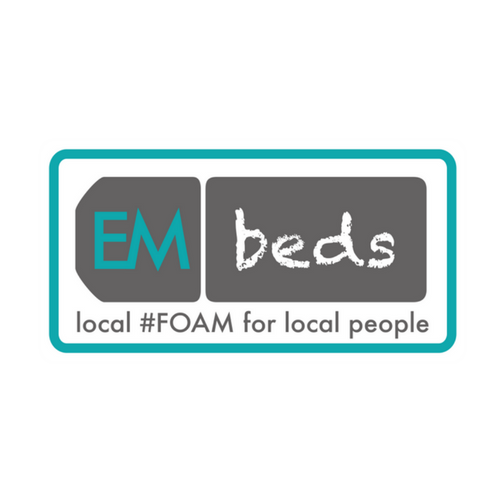This is a relatively common presentation within the ED that has a myriad of possible diagnoses ranging from sprain to malignancy. One thing to remember is that patients and relatives will look for a traumatic reason for limb pain, and may link it to minor injuries that would not have caused it.

PDF:Limping Child advice sheet
Injury
History of trauma / focal boney tenderness – have a low threshold for X-Ray, as children are more likely to have buckle fractures, growth plate injuries, and toddlers fractures can all be subtle [NICE]
History of overuse – Consider Osteochondritis (Osgood-Schlater, Severs’, dessicans, etc) X-Ray diagnosis is recommended
Hip pain (may refer to knee or thigh)
- SUFE: Rare, >10yrs, overweight, can be acute or chronic.
- X-ray + frog leg view (Xray changes can be subtle and early diagnosis is important)
- Perthes: 4-8yrs, M>F, necrotic femoral head. X-Ray
- Transient synovitis: 4-8yrs (rare under 3yrs), M>F, associated with viral illness.
- IF well reasonable to discharge to return to next clinic (approx 48hr)
- Regular analgesia
- Return advice: fever, child becomes unwell, pain becomes more severe
- If has persisted for over 7 days investigate : FBC/U&E/CRP/ESR, X-Ray, Ultraound
Septic Arthritis vs. Transient Synovitis
Joint aspiration is the “Gold standard” but this is quite invasive and most cases won’t be septic arthritis. There have been various Risk-Stratification tools developed around the Kockers criteria however non-of them have been validated on an ED population and their use would be not be recommended. [further discussion on these can be found at the bottom of the post]
- Septic Arthritis: Hip/Knee/Ankle/Elbow Common Sites. Requires aspiration (Paediatrics)
- Transient synovitis: Hip, 4-8yrs (rare under 3yrs), M>F, associated with viral illness
Osteomyelitis
Focal bone pain and elevated inflamatory markers – X-Ray and orthopaedic review
Abdo/testicular pain
- Appendicitis
- Testicular torsion
- Psoas abscess – Rare but does happen, (Psoas sign, lay on side with knee extended, passively extend hip and patient has abdominal pain)
Discitis
Rare, local tenderness, elevated inflammatory markers, S. Aureus is most common organism, will need MRI and admission to paediatrics.
Red flags
You will likely need to do FBC/U&E/CRP clotting and culture may be required, and X-Rays my also be needed if considering localised malignancy. Follow up again will vary from admission to review in paediatric or orthopaedic clinics. Involve senior decision makers
- Pain waking the child at night — this may indicate malignancy (inc. Leukaemia)
- Weight loss, anorexia, fever, night sweats, or fatigue — this may indicate malignancy, infection, or inflammation.
- Signs of redness, swelling, or stiffness of the joint or limb — this may indicate infection or inflammatory joint disease.
- Limp and stiffness worse in the morning — may indicate inflammatory joint disease
- Unexplained rash or bruising — this may indicate haematological or inflammatory joint disease, or raise the possibility of child maltreatment.
- Severe pain, anxiety, and agitation after a traumatic injury — may indicate an evolving compartment syndrome.
Risk stratification tools for Septis Arthritis
Kocker developed the initial algorithm based on patients presenting between 1979-2004, and used Fever > 38.5°C, Cannot weight bare, ESR >40mm/hr, WCC >12 as markers, however in their validation they comment that CRP is a better marker than ESR (however they did not report results as it only became available routinely late in the study period)
Caird added CRP > 20mg/l and commented that CRP and Fever were the most predictive elements, however as you can see from the prevalences below they studied a very high risk group. Sultan based at Blackpool (UK) also commented that CRP and Fever were the most predictive however, the prevalence of septic arthritis in the Sultan group was much lower (5 of 96, compared to approx a third in the Kocker studies)
Probability of septic arthritis (PPV) : Fever > 38.5°C, Cannot weight bare, ESR >40mm/hr, WCC >12, CRP >20mg/l
| No. Markers | No CRP | Includes CRP | ||
| Kocker1 (n=282) | Kocker2 (n=154) | Caird (n =53) | Sultan (n=96) | |
| 0 | <0.2% | 2.0% | 16.9% | 2.3% |
| 1 | 3.0% | 9.5% | 36.7% | 5.1% |
| 2 | 40.0% | 35.0% | 62.4% | 10.9% |
| 3 | 93.1% | 72.8% | 82.6% | 22.0% |
| 4 | 99.6% | 93.0% | 93.1% | 39.4% |
| 5 | 97.5% | 59.9% | ||
Interpretation
Applying these decision criteria to an ED population is often inappropriate as they were not validated on our ED population. If they are being applied this needs to be done with some caution and senior input.
References
Particular thanks to Dr. Alistair Morris for all of his help
- NICE – Acute Childhood Limp
- Evaluating the child who presents with an acute limp, BMJ 2010;341:c4250
- A Systematic Approach to the Evaluation of a Limping Child, Am Fam Physician. 2015 Nov 15;92(10):908-918
- Kocker¹ Differentiating Between Septic Arthritis and Transient Synovitis of the Hip in Children: An Evidence-Based Clinical Prediction Algorithm, J Bone Joint Surg Am. 1999 Dec;81(12):1662-70
- Kocker² Validation of a clinical prediction rule for the differentiation between septic arthritis and transient synovitis of the hip in children. J Bone Joint Surg Am. 2004 Aug;86-A(8):1629-35.
- Caird Factors distinguishing septic arthritis from transient synovitis of the hip in children. A prospective study. J Bone Joint Surg Am. 2004 Aug;86-A(8):1629-35.
- Sultan, Septic arthritis or transient synovitis of the hip in children THE VALUE OF CLINICAL PREDICTION ALGORITHMS, J. of bone and joint surgery (Br). 2010 92-B(9), 1289-93
